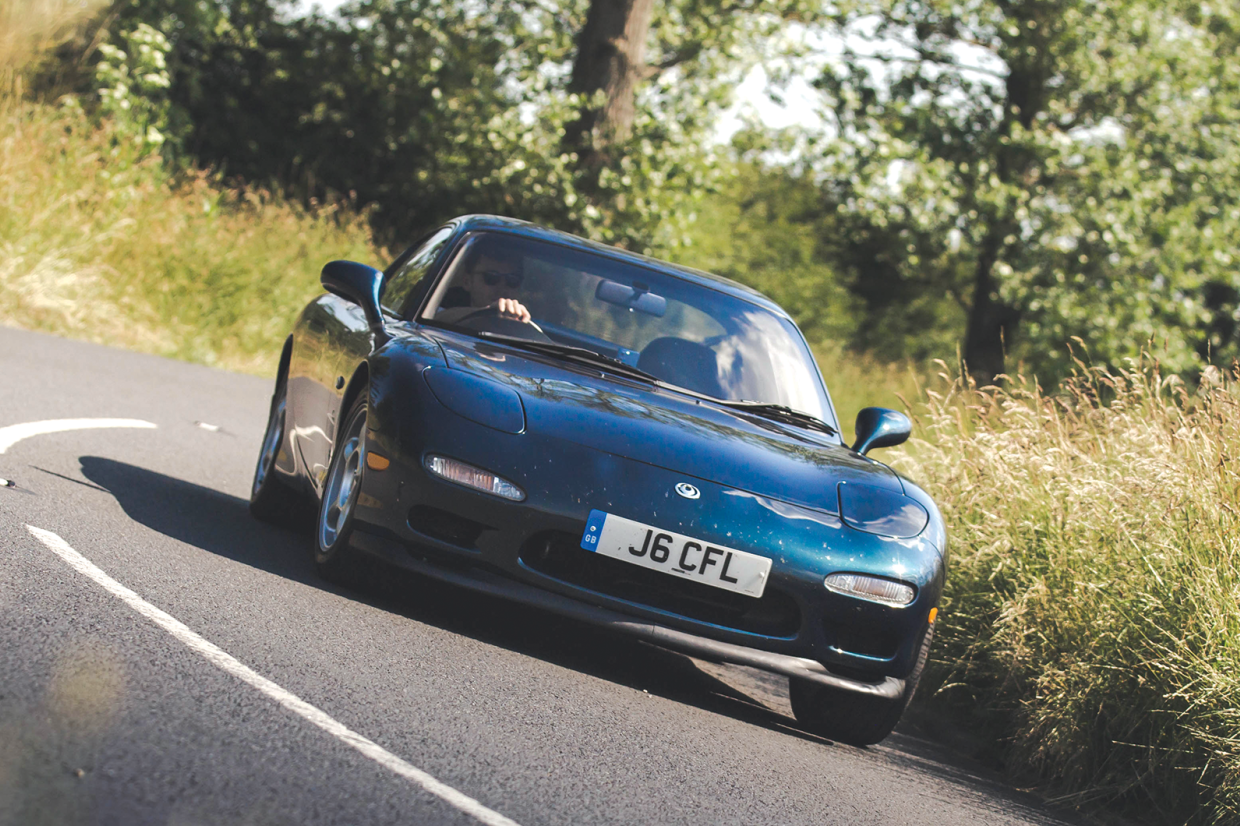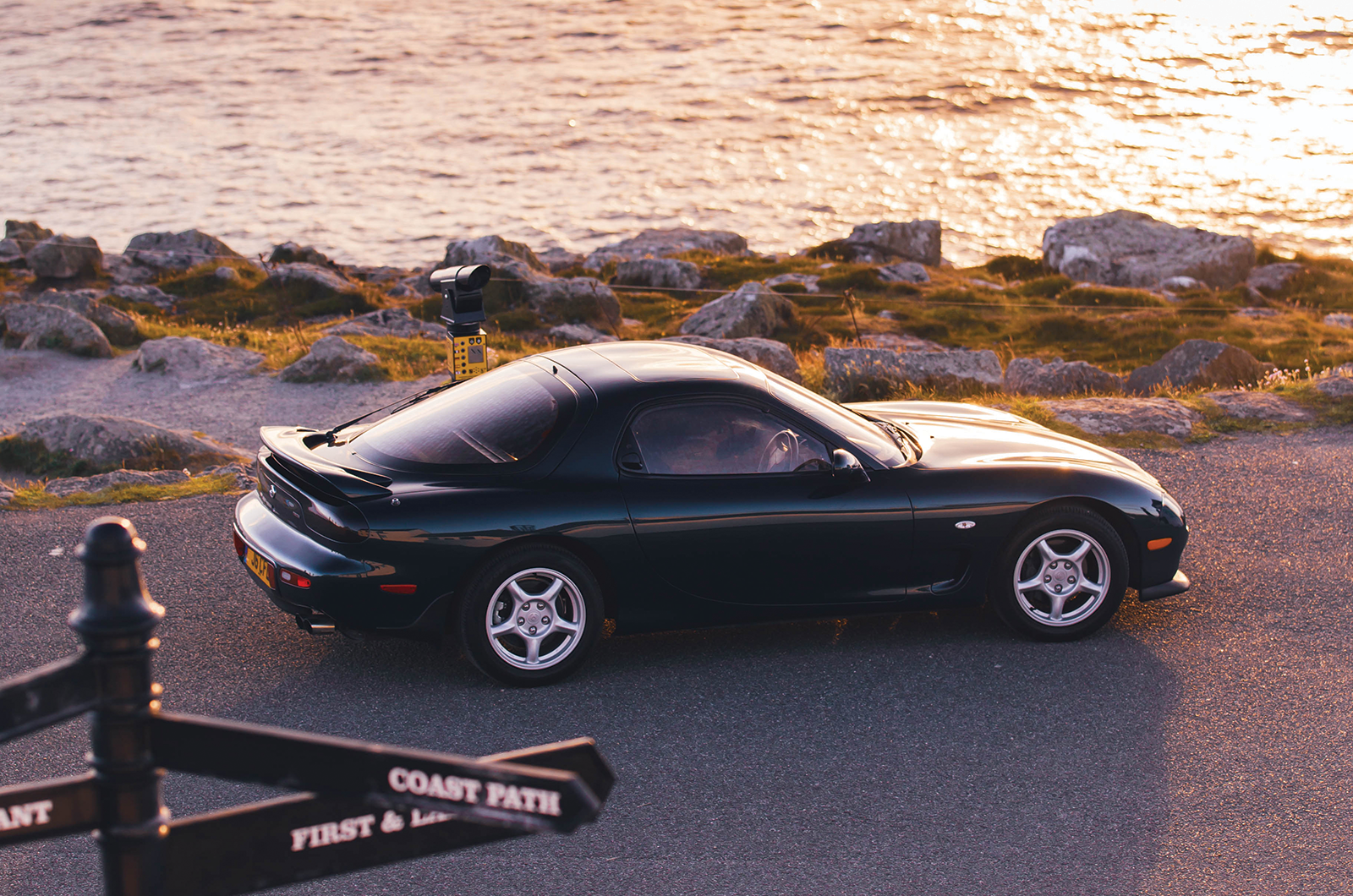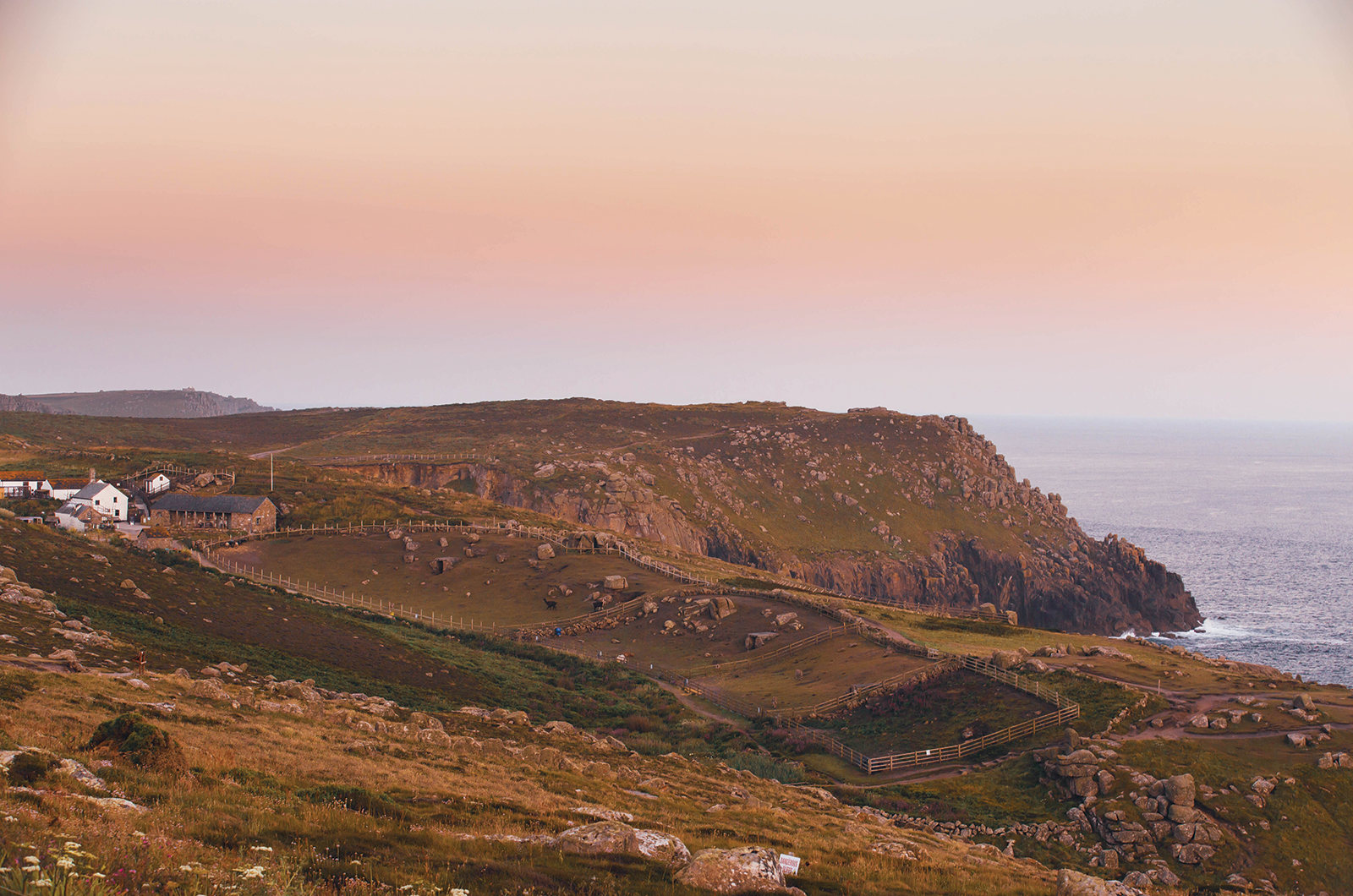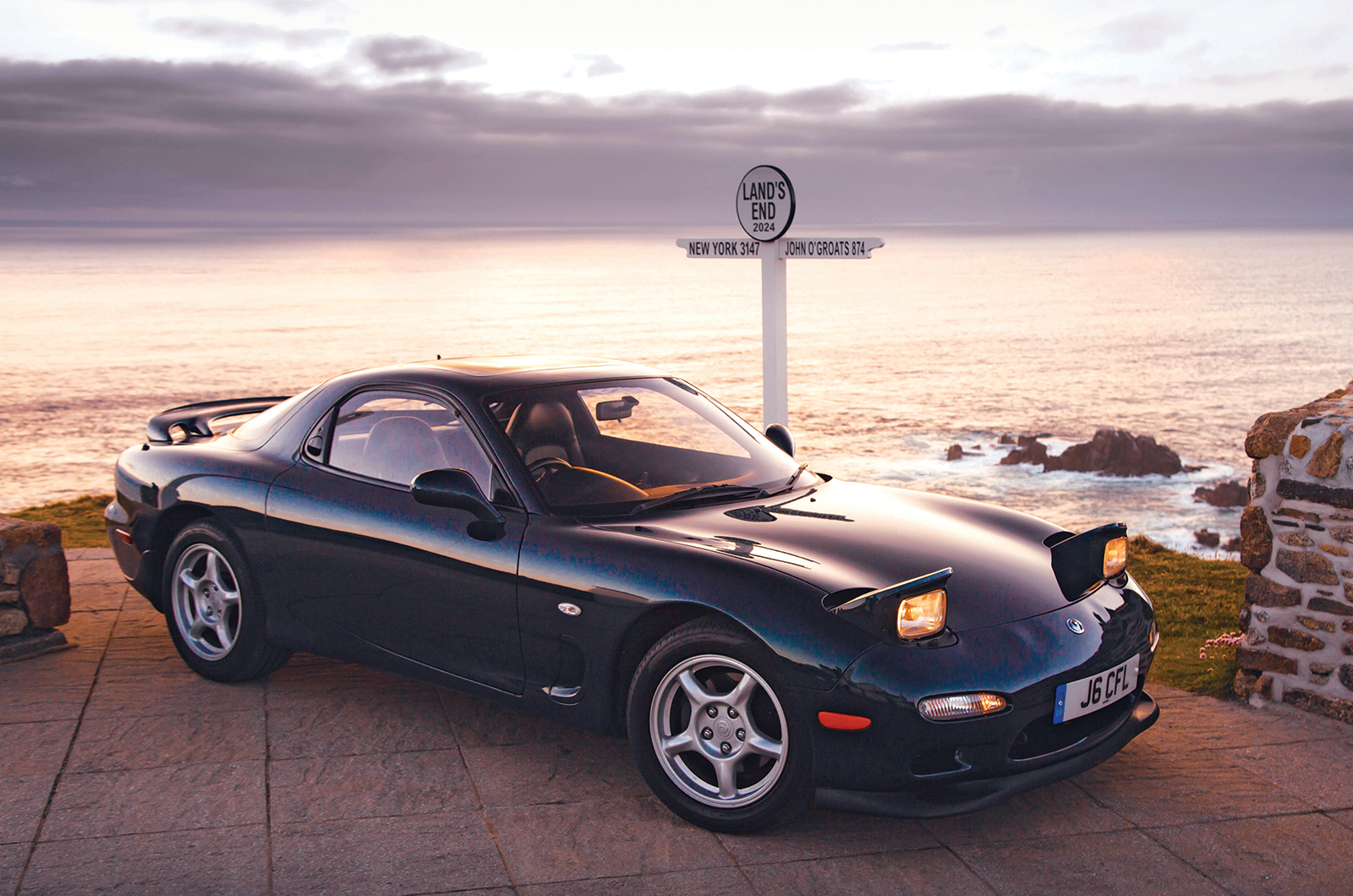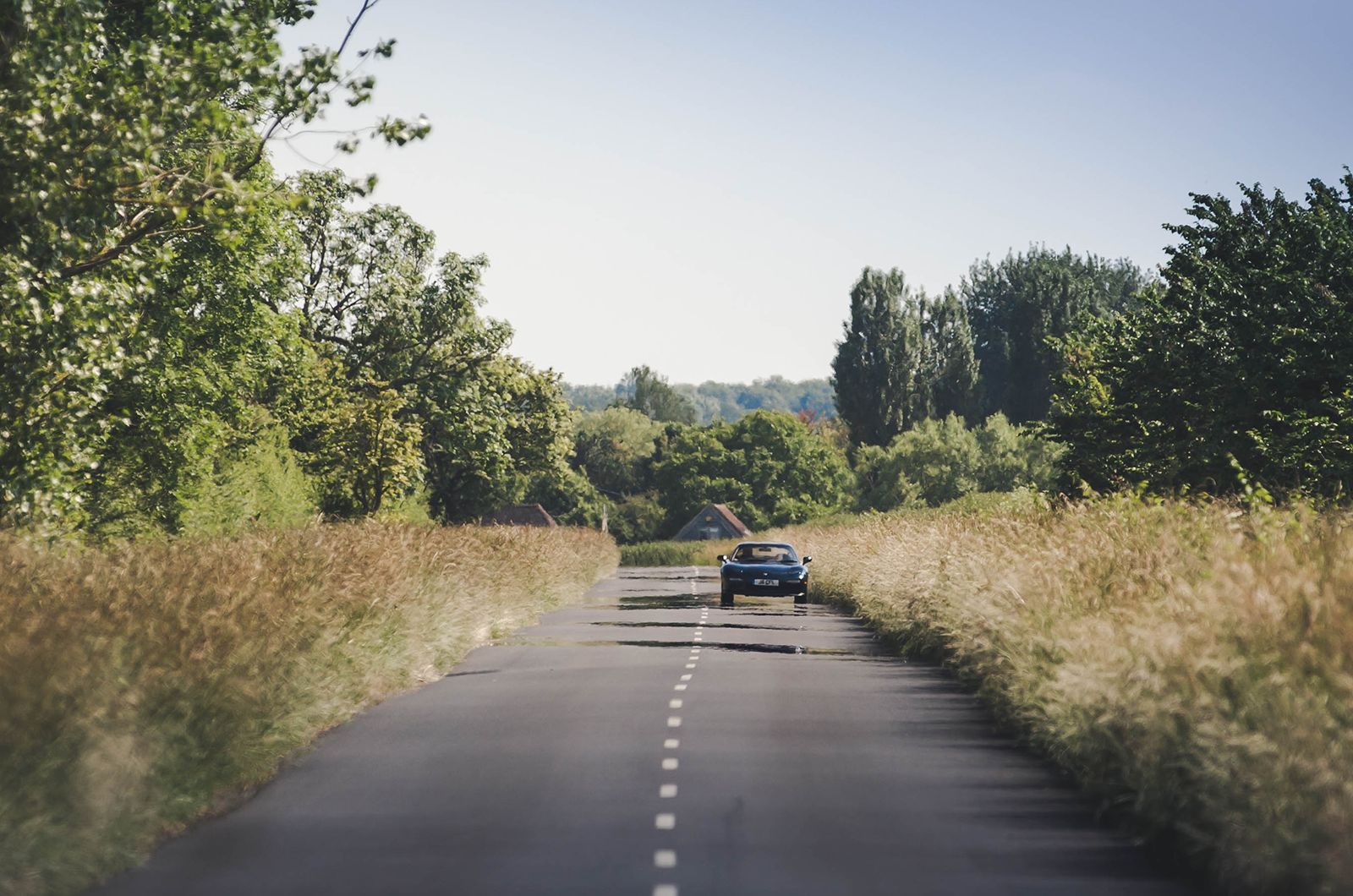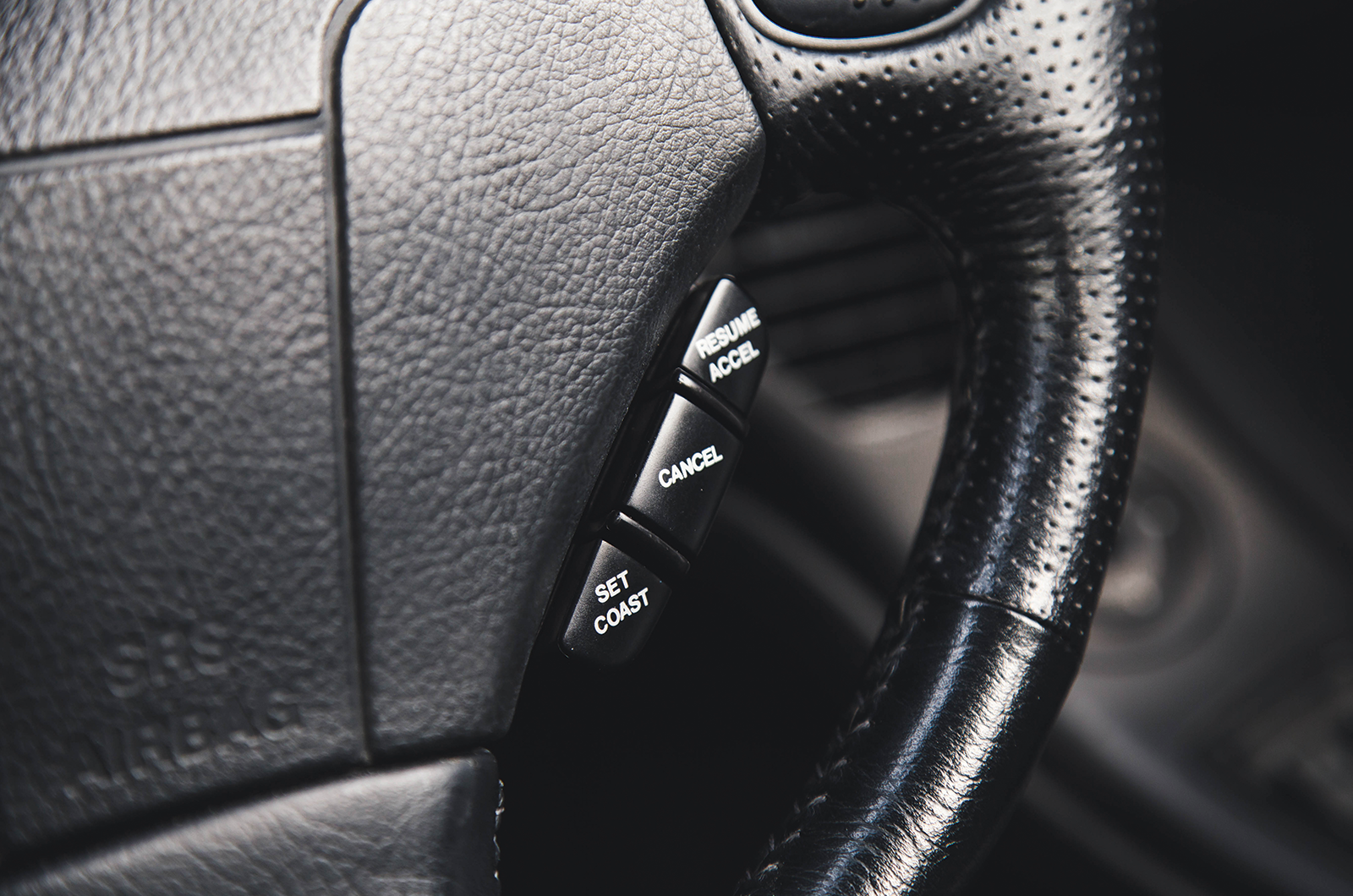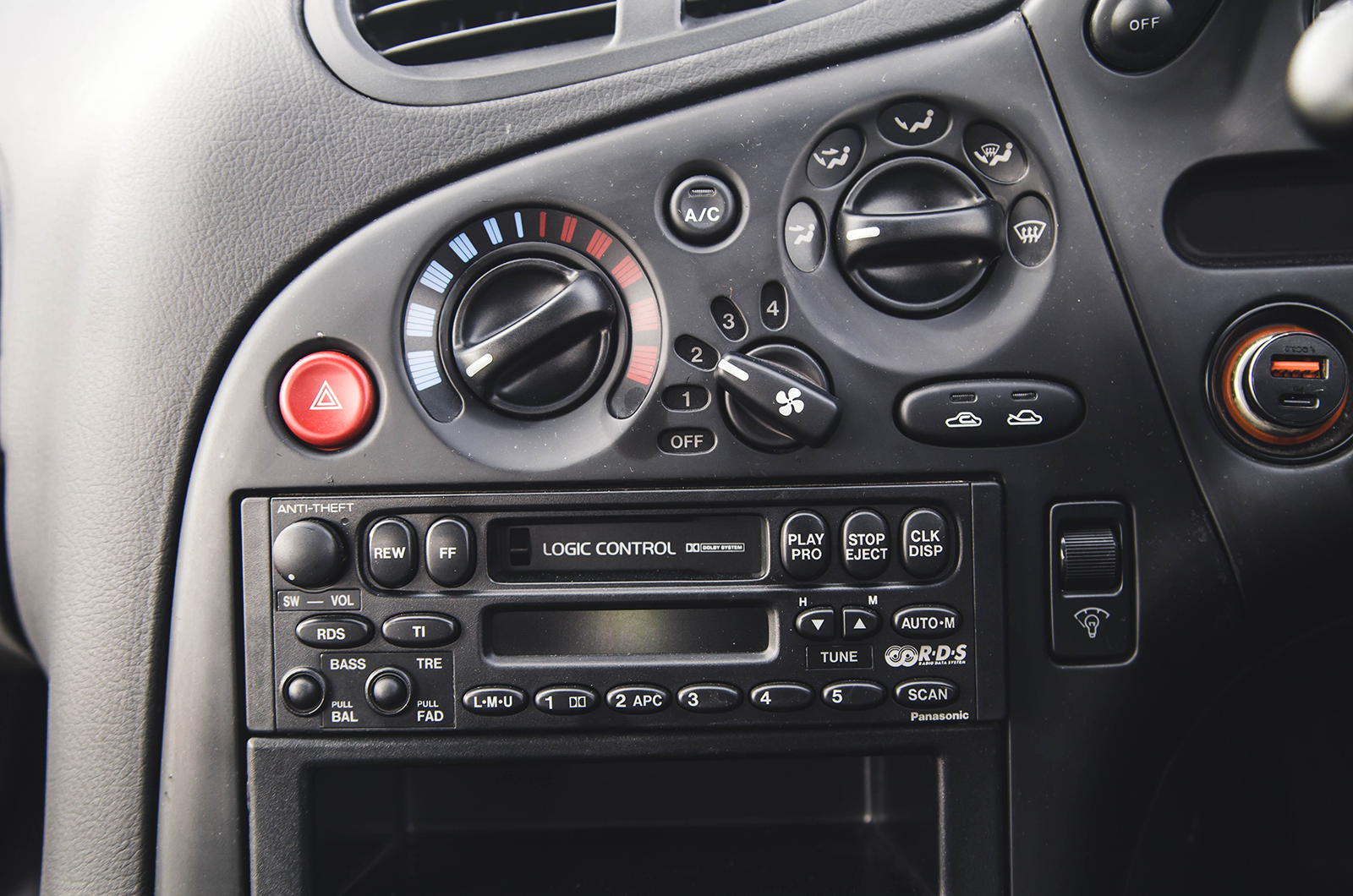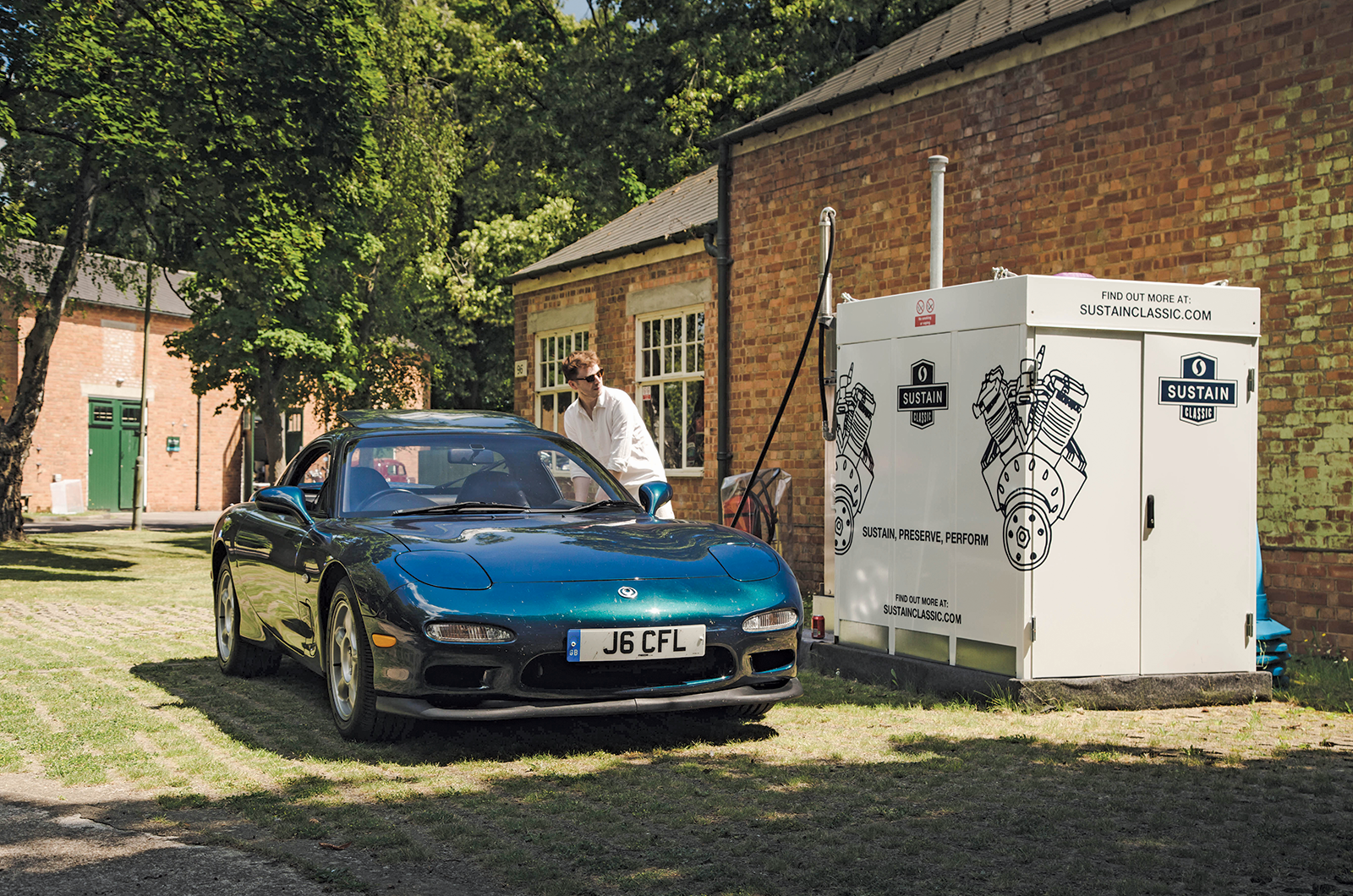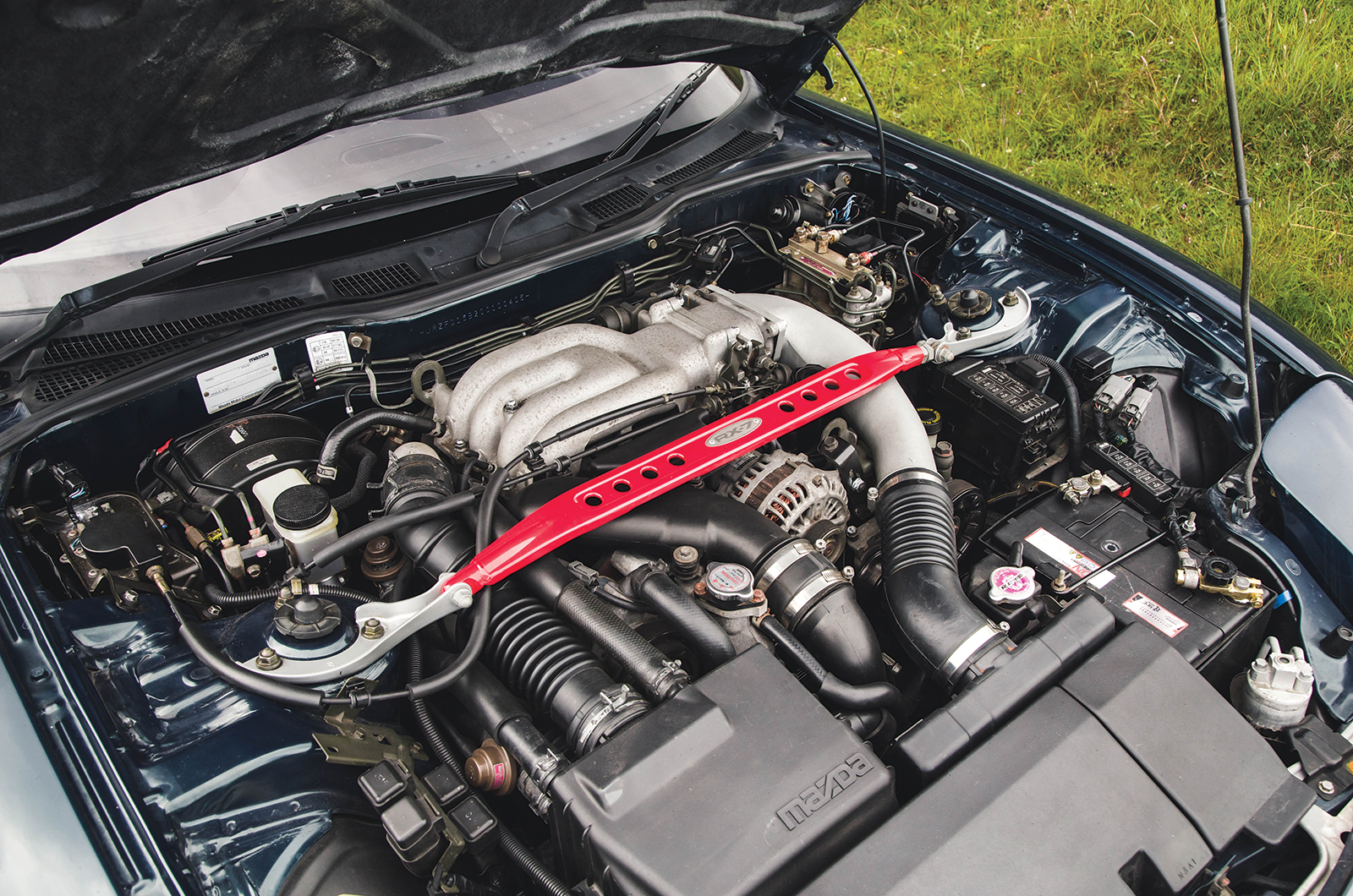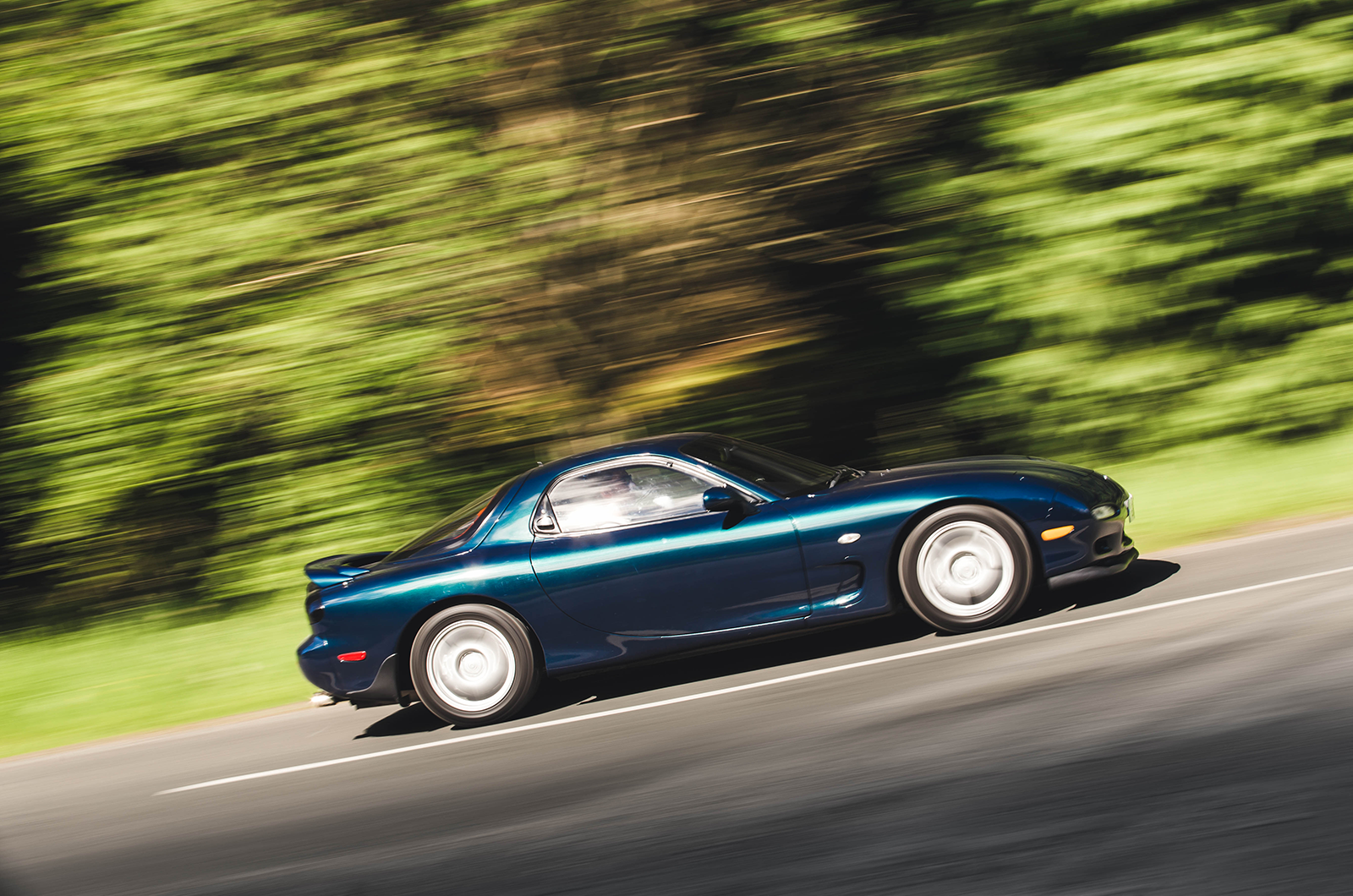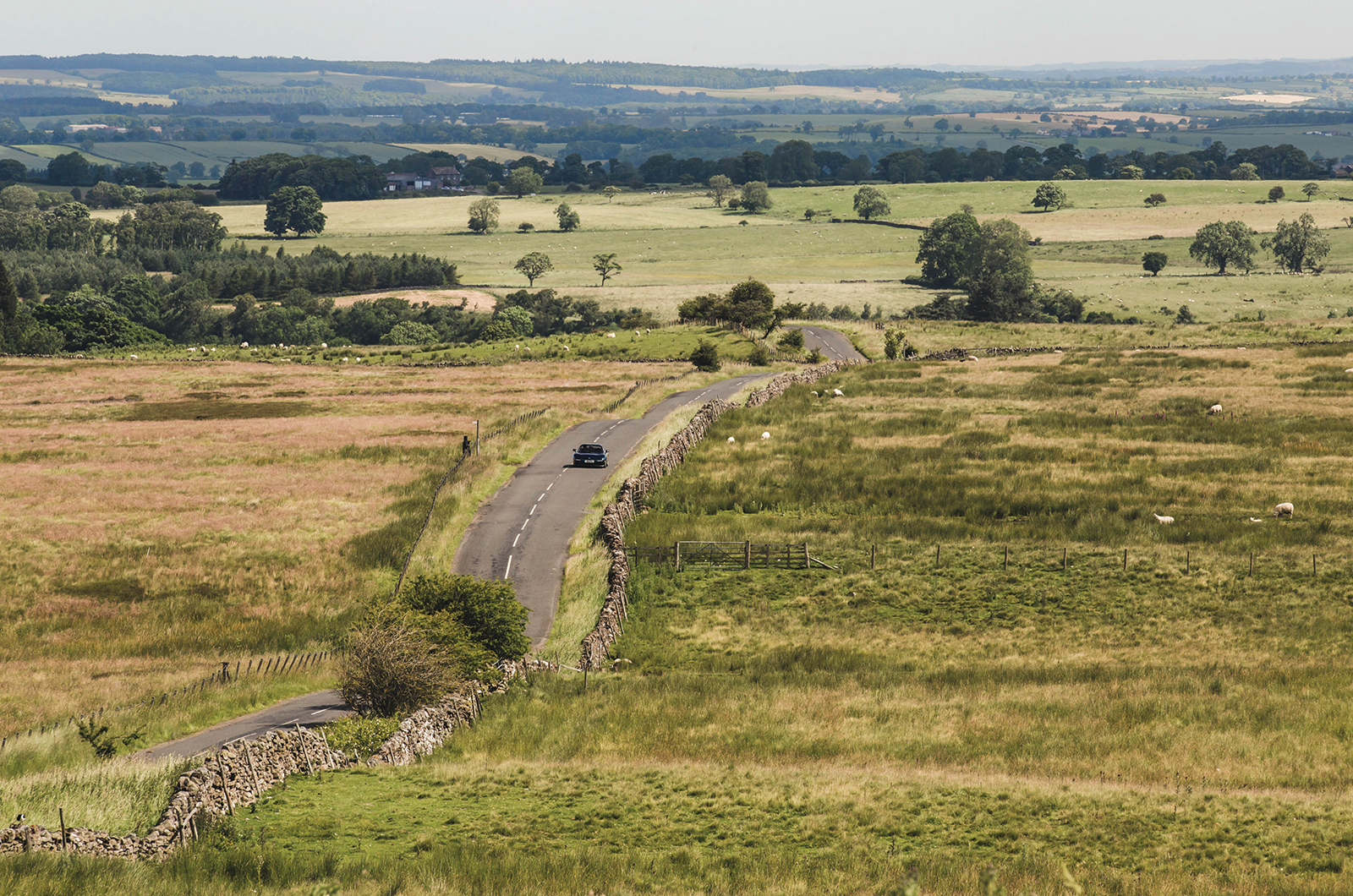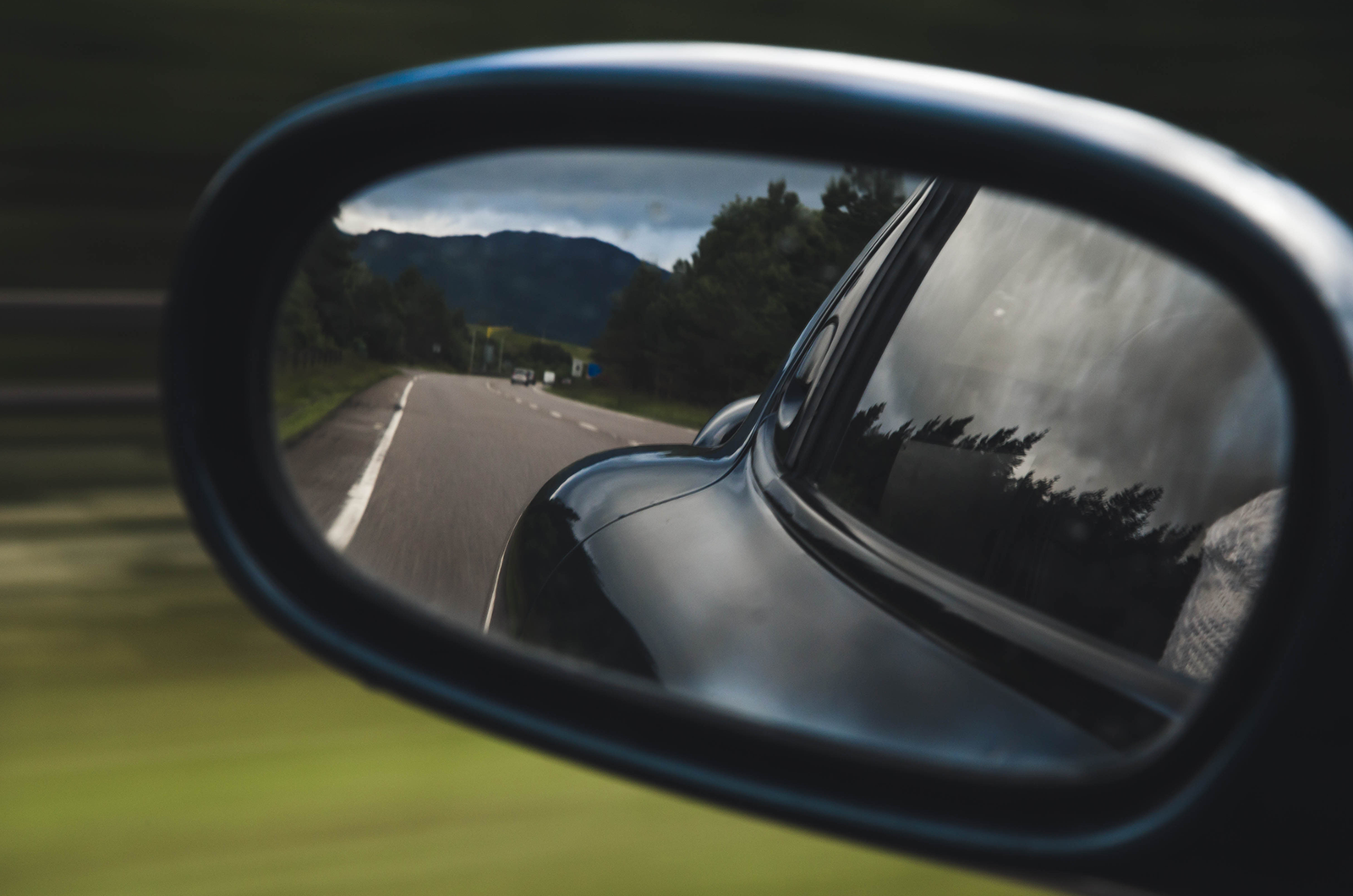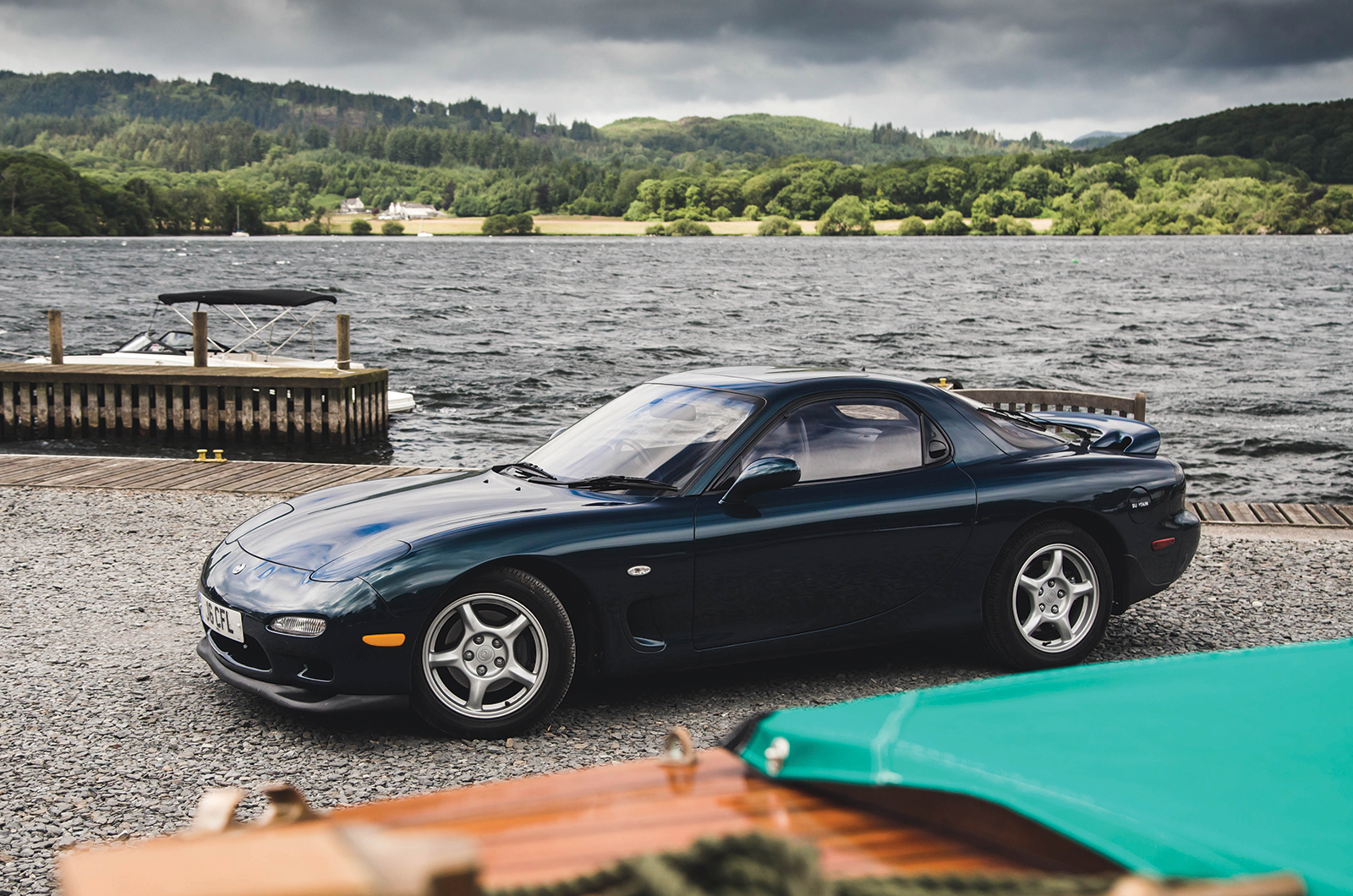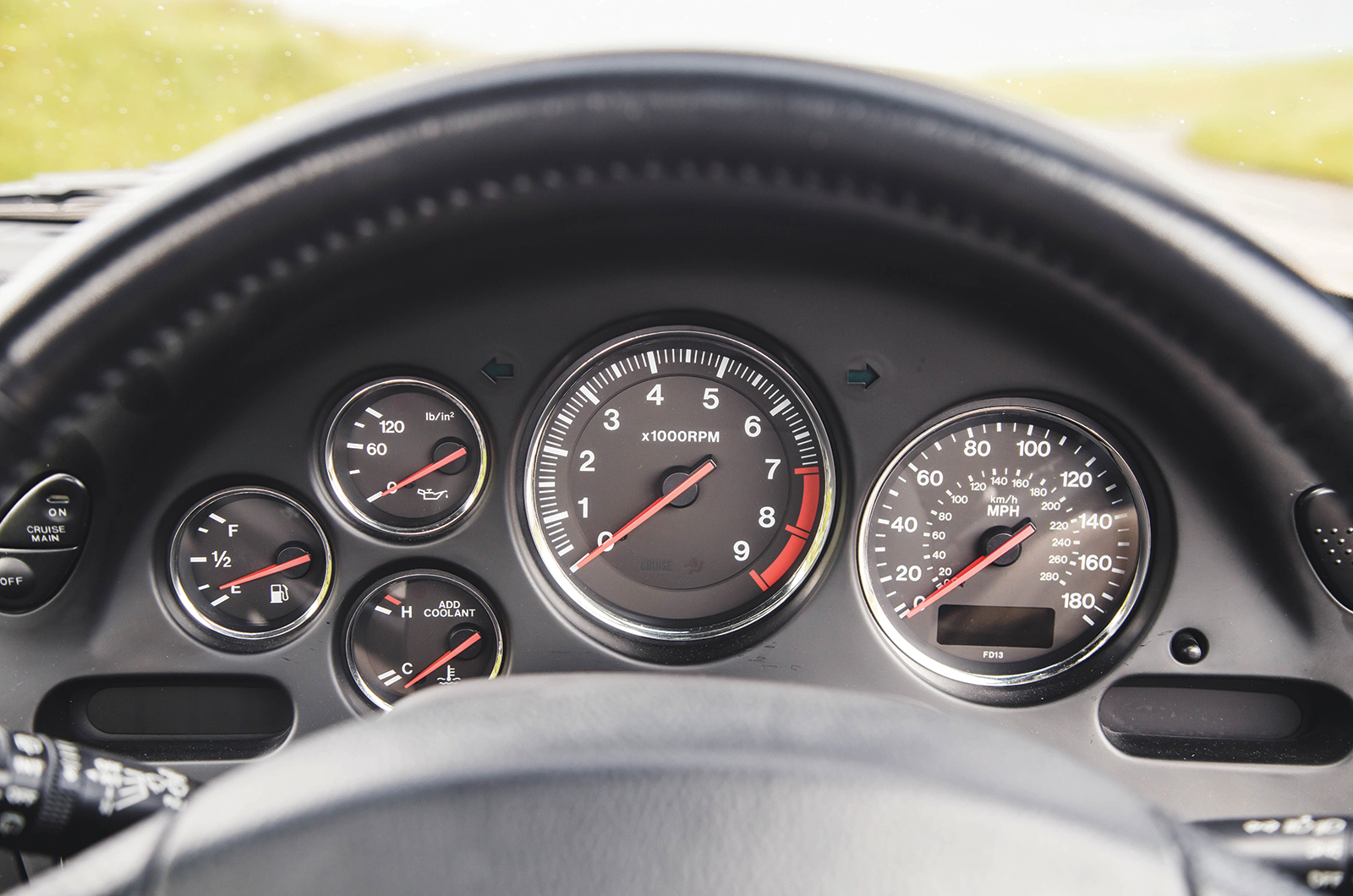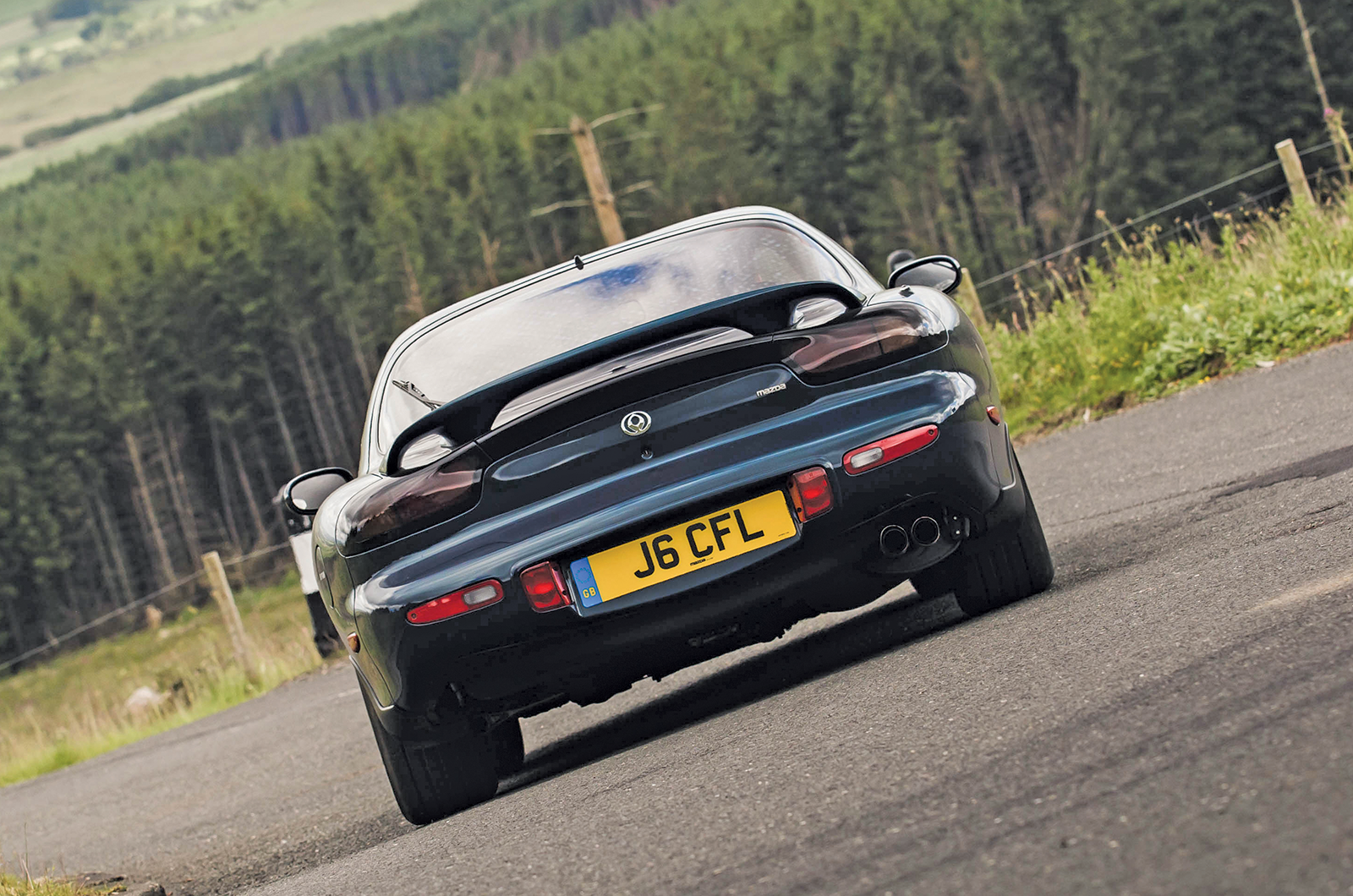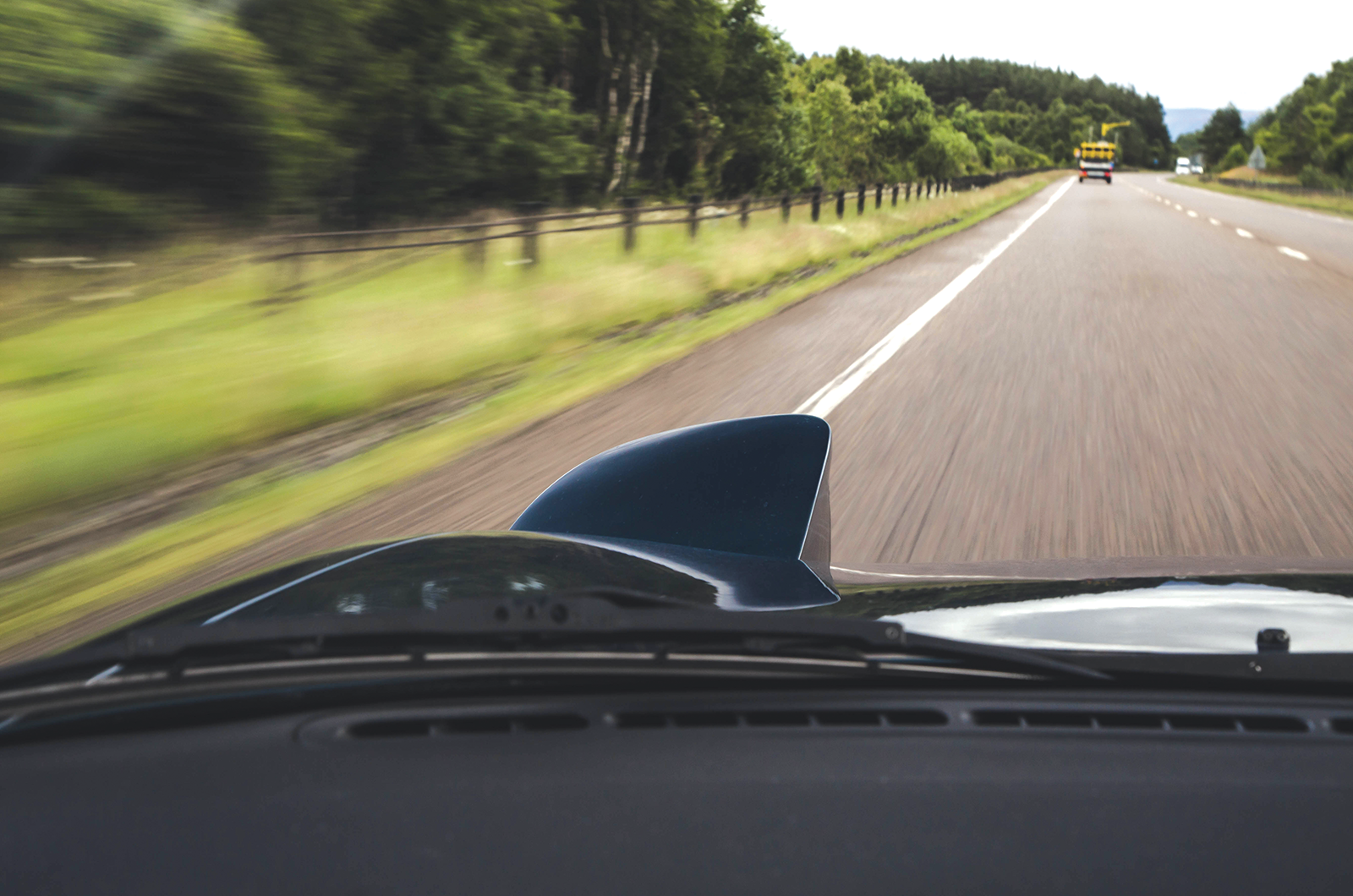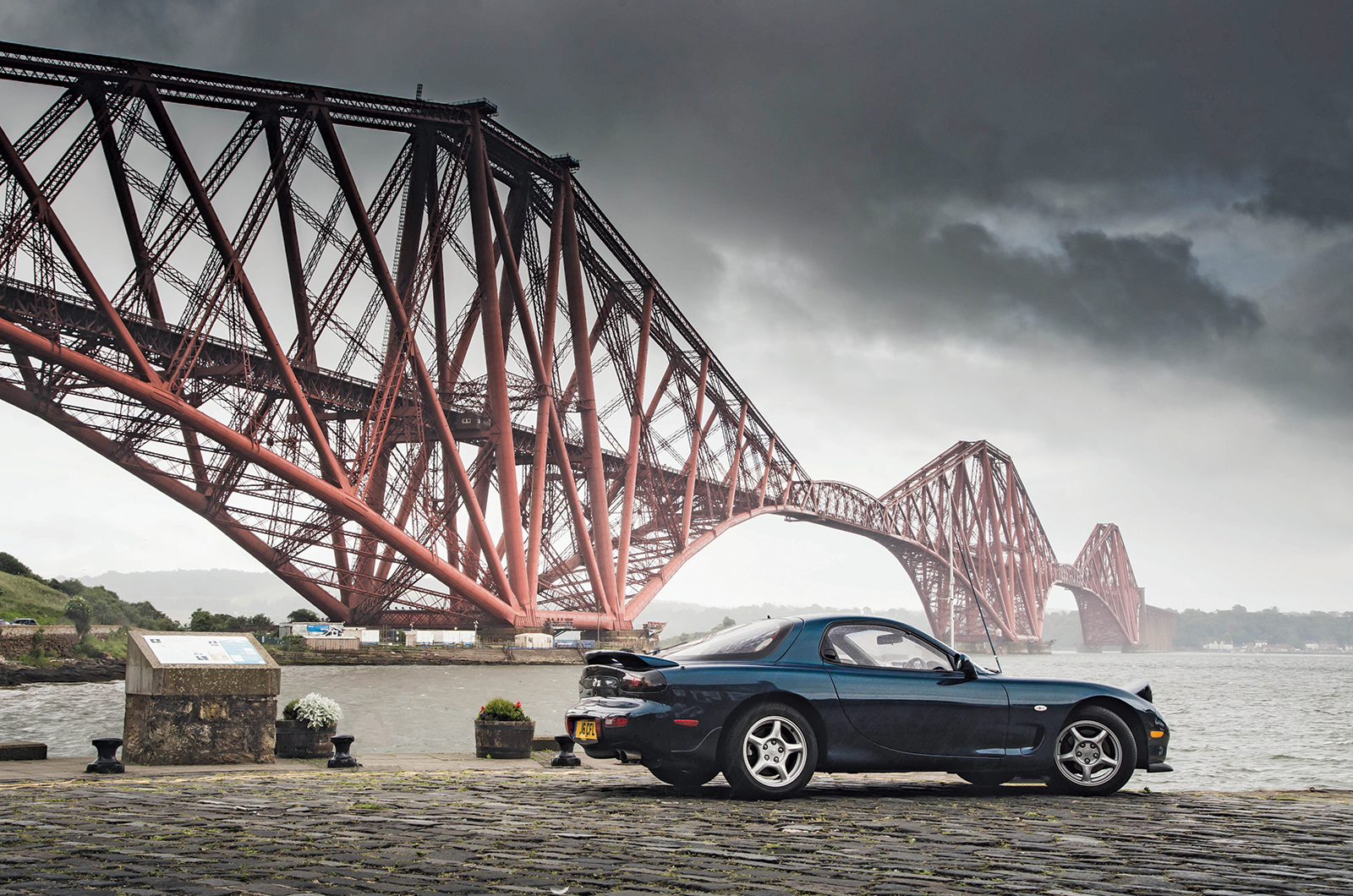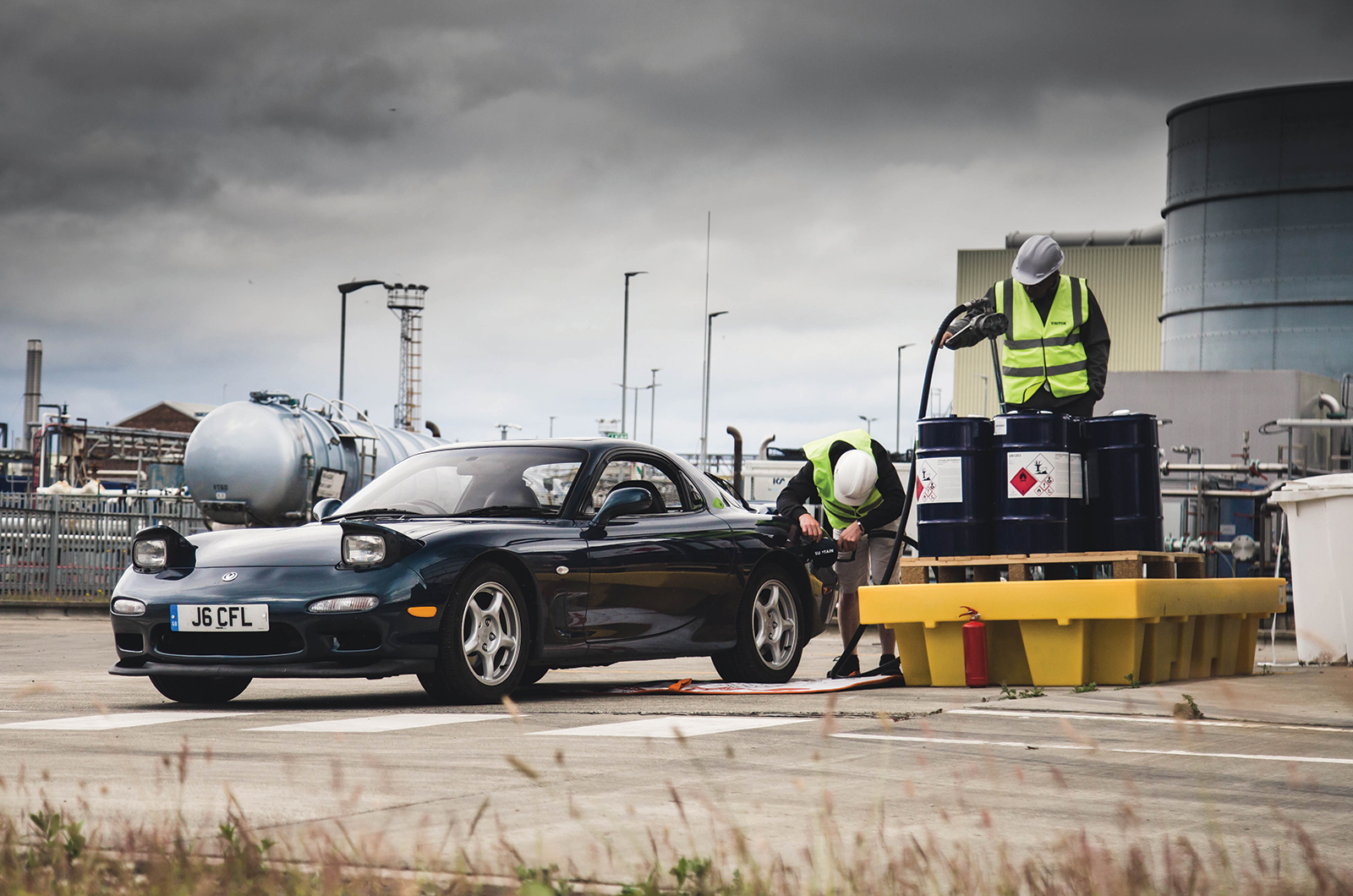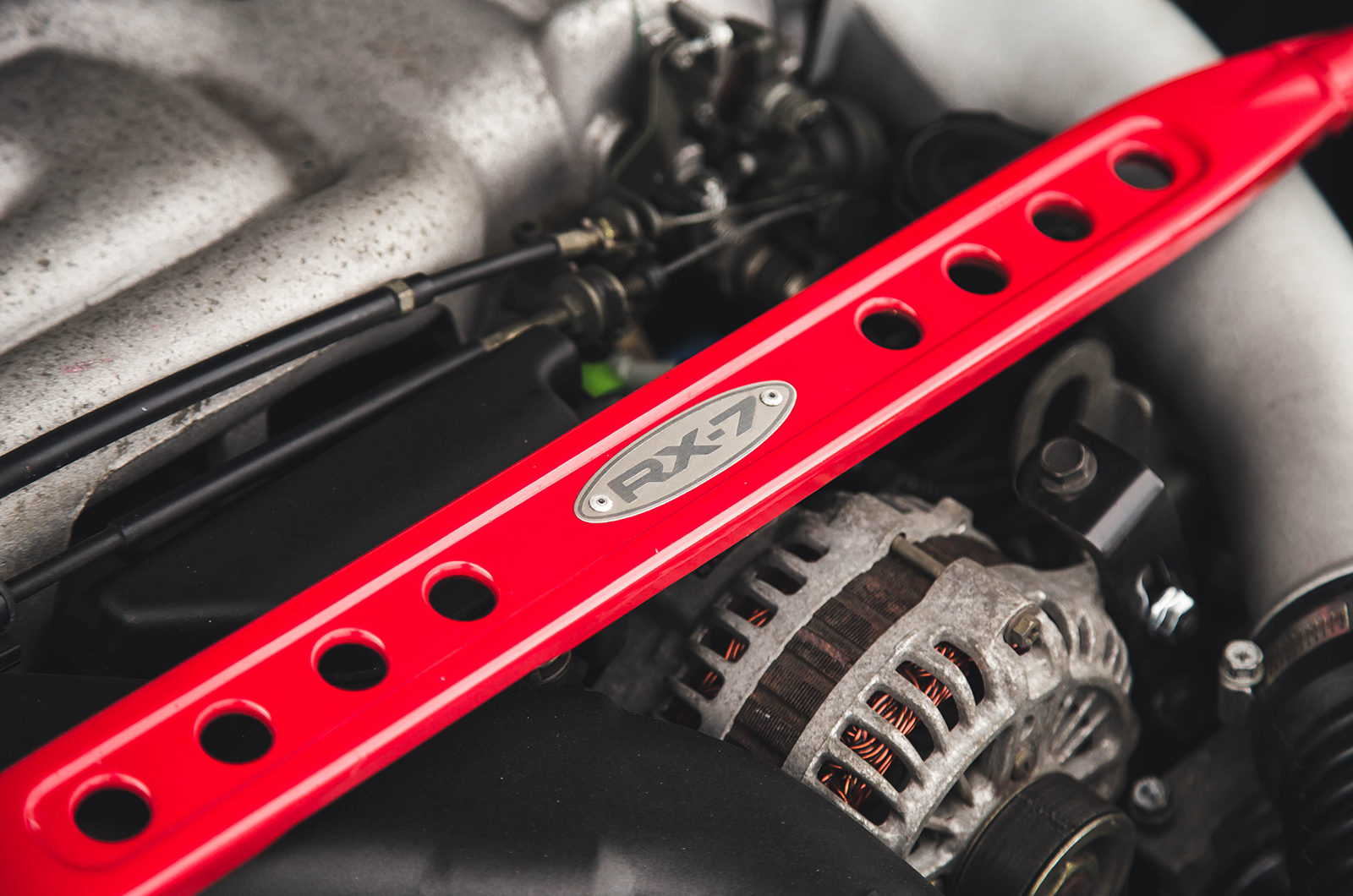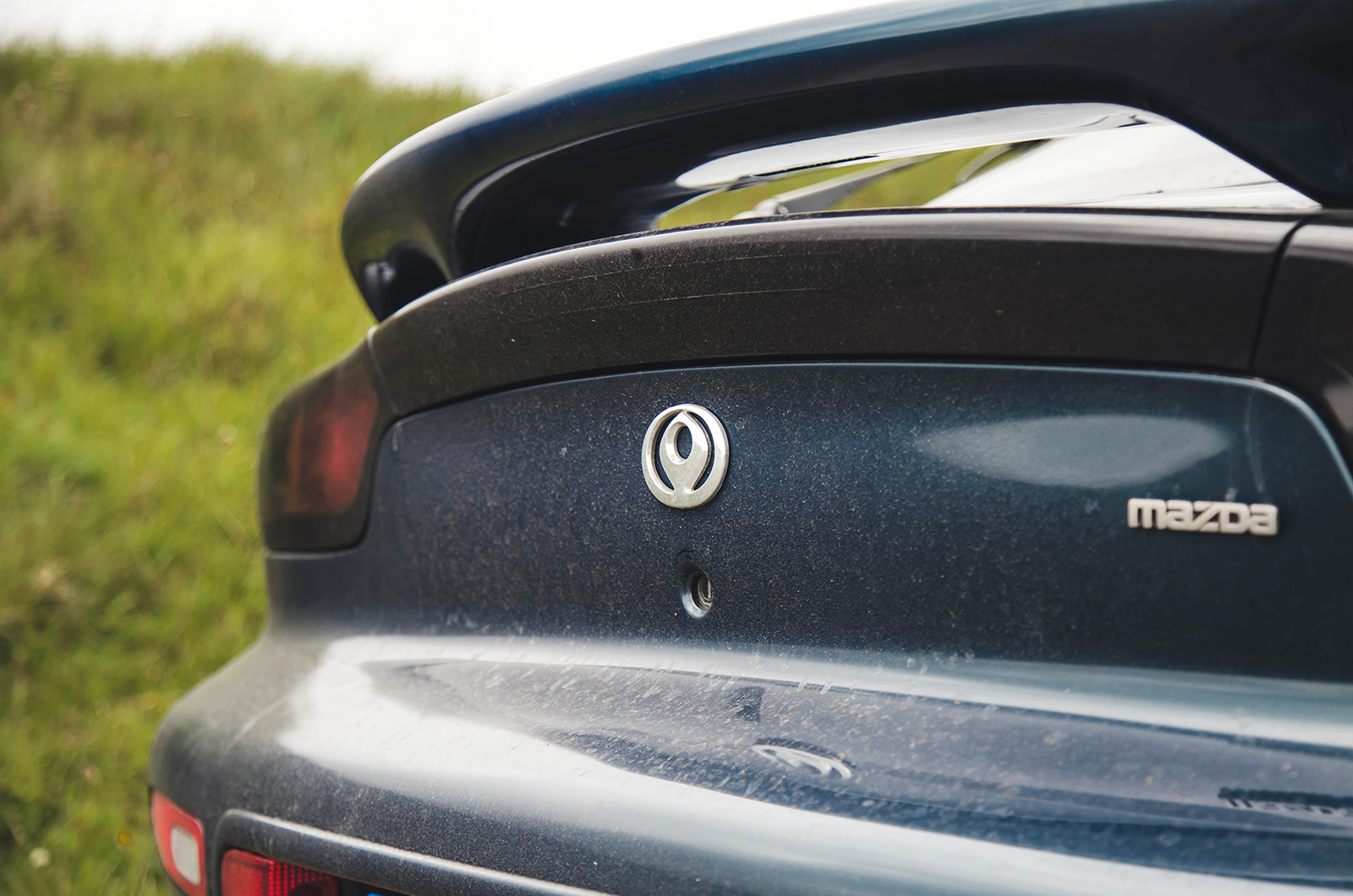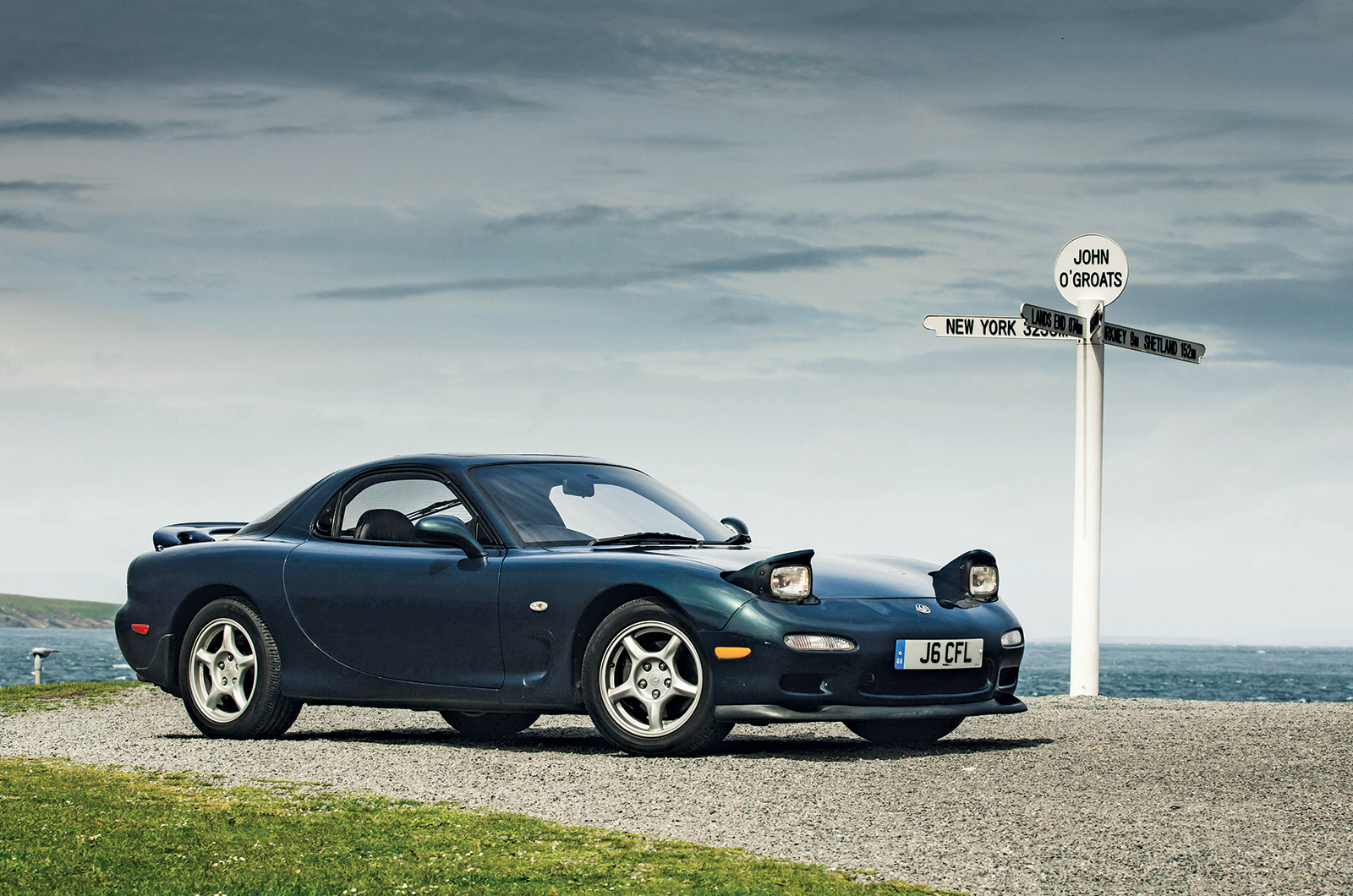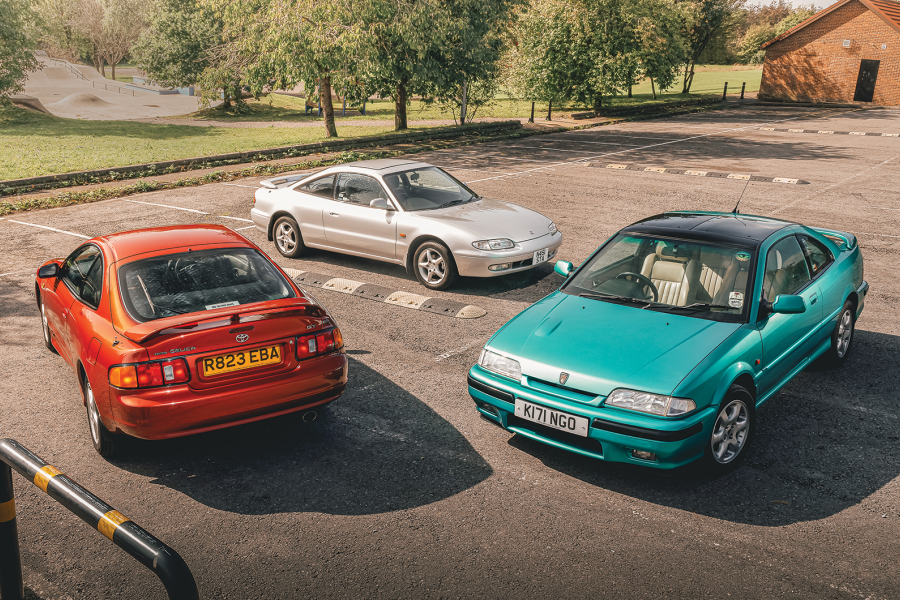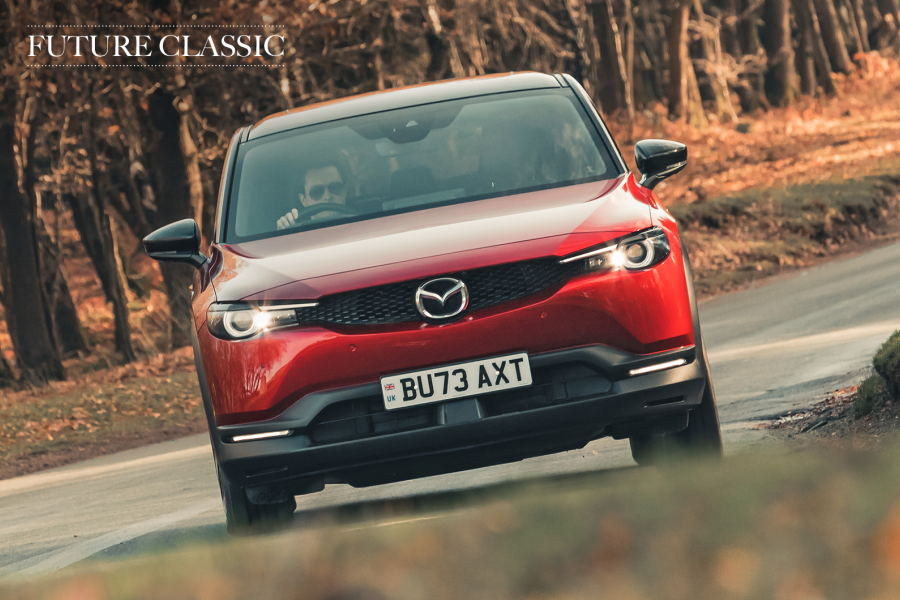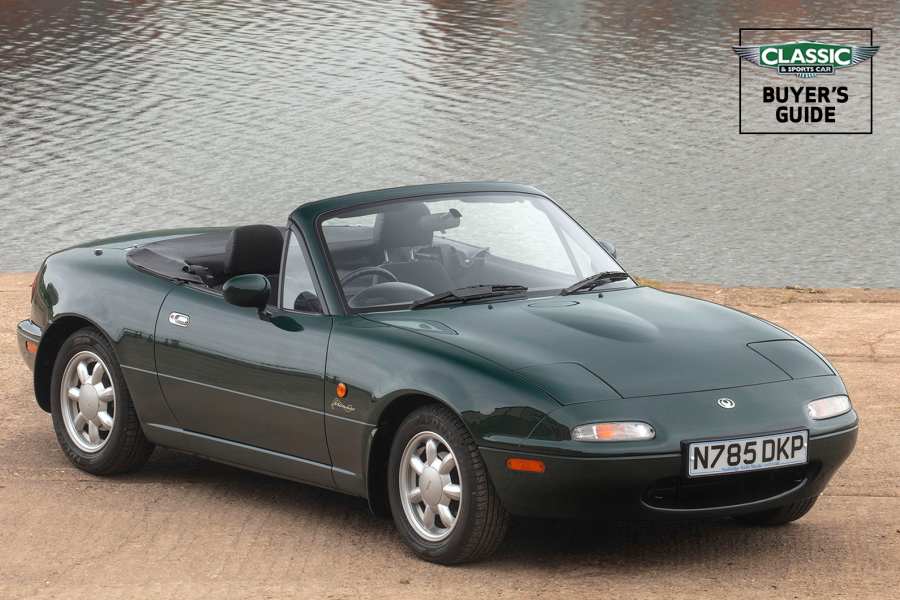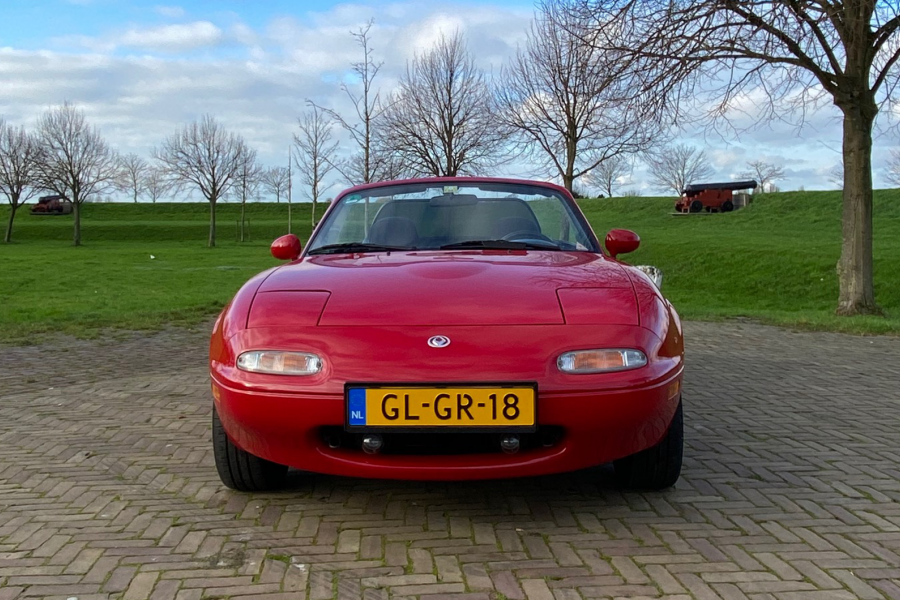Unlike in synthetic compositions, the carbon is completely organic, coming from forestry waste, farm by-products and rejected vegetables.
As with bioethanol, all of the CO2 created from burning the fuel has been sucked out of the air by the plants that created the organic matter.
Unlike bioethanol, however, a car designed for traditional petrol needs no modification to run Sustain’s biofuel, nor will it see a drop in performance.
What comes out of the refinery is, in practical effect, identical to fossil-derived petrol of about 93RON.
Experiencing the Mazda RX-7’s sweet chassis balance
To bump that up to the UK-standard 95RON, 5% of this formula is traditional bioethanol – much the same as you’d find in the E5 at a petrol station.
That’s the last fill-up of the trip.
The Mazda has to cover the remaining 273 miles to John O’Groats in one hit, a similar distance to the first leg from Land’s End to Bicester, but on twistier roads.
Scotland’s infamous A9, the main road to the Highlands and one dripping in average-speed cameras, proves good for the Mazda RX-7’s economy, however: the fuel needle hits the three-quarter mark at the final overnight stop at Dunkeld, just north of Perth.
The Mazda RX-7’s signature pop-up lights
Up to Inverness, the A9 is as beautiful in its Cairngorms-edged scenery as it is frustrating.
After the Moray Firth, however, the nannying melts away, as does most of the traffic, and the road becomes part of the famous North Coast 500 loop.
Here, on smooth roads, the Mazda RX-7 is in its element at last.
It sits relaxed in its high gearing, but as soon as a slower car comes into view, you can drop a cog to overtake quickly and without fuss.
An accidental diversion towards Edinburgh gives a chance to admire another survivor of the UK’s corrosive weather
The section after Dornoch Firth, either side of Brora, is stunning.
Strips of quiet, largely straight, sweeping road are separated by tight corners climbing hills or circumventing lochs.
The Mazda’s tight throttle response, flat cornering and stable, weighty steering are a joy to embrace in this setting.
Wick has a bit of a ‘last town’ vibe, however, not least in its road surface, something with which the RX-7 driver will forever be obsessed.
Refuelling the Mazda RX-7 by fuel drum and hand pump, but Sustain’s network is growing
It isn’t that the car bottoms out or loses grip due to its firmness – its suspension keeps the tyres in contact with the Tarmac, and it can probably manage these rough roads more quickly than we are going.
It isn’t even that uncomfortable. But the constant rattling, vibration and shaking leave you scanning for a smooth path ahead or wincing when you hit a rough patch.
It’s got a slightly confusing character, the Mazda RX-7.
Fitted with leather seats, air-con and cruise control when such things were luxuries, it reads like a GT from the spec sheet, and that’s how, on a level road, its driving manners first register.
Driving this classic Mazda on the A9 north of Inverness is a highlight
It majors on high-speed stability, while its twin-turbo rotary engine delivers power in a serious, deliberate way.
It isn’t effervescent, chuckable fun like its MX-5 stablemate, yet its harshness would put off those looking for a GT.
Nobuhiro Yamamoto, the recently retired engineer who developed rear-drive Mazdas for decades, described it as a “pure sports car”, focused on being as fast as possible.
You’re not meant to smile behind the wheel of an RX-7; you should be sweating slightly, challenging yourself.
A Porsche 968 Club Sport is perhaps the Mazda’s most similar contemporary.
The Mazda RX-7’s factory strut brace
The poor roads from Wick to John O’Groats mean we reach our end point with some sense of relief.
Due to the hand pumps we’ve been using at our fuel stops, I can’t measure our economy exactly, but a rough estimate suggests about 21mpg.
The Mazda RX-7 has run faultlessly, too, as if it were burning any normal fuel.
Were it standard petrol, the car would have emitted 512kg of CO2 during the trip.
The Mazda RX-7 picked up some road grime on the two-and-a-half-day journey
That’s a similar carbon impact to a one-way economy ticket from Heathrow to Cyprus, or a new 60in TV.
Instead, we’ve contributed a net impact of 92kg.
As previously mentioned, this stuff isn’t cheap: the 100% fossil-free fuel we’ve used is not even on public sale, and Super 80 is nearly three times the cost of regular pump petrol.
Whether you look to sustainable fuel or an electric conversion, every solution to reducing the environmental impact of a classic car remains the preserve of the wealthy – for now.
But so, too, was fossil-derived gasoline in the past.
The Mazda RX-7 reaches John O’Groats after 999 miles and about 21mpg
If sustainable fuels can become that bit cheaper, which becomes more likely if those that are in the position to buy it do so, then we have not only a cleaner source of energy for our cars that doesn’t involve changing their character, but also a supply of fuel when the mainstream motorist is no longer buying the fossil stuff.
If that means I can return to the north-eastern Scottish coast in a Mazda RX-7 in the future, I’m on board.
Images: Jack Harrison
Thanks to: Mazda UK; Sustain Fuels
Enjoy more of the world’s best classic car content every month when you subscribe to C&SC – get our latest deals here
READ MORE
Sustainable fuels: a greener future for classic cars
26 times Mazda got it right
Street fighters: Mitsubishi 3000GT vs Toyota Supra vs Nissan 300ZX
Charlie Calderwood
Charlie Calderwood is Classic & Sports Car’s Features Editor
